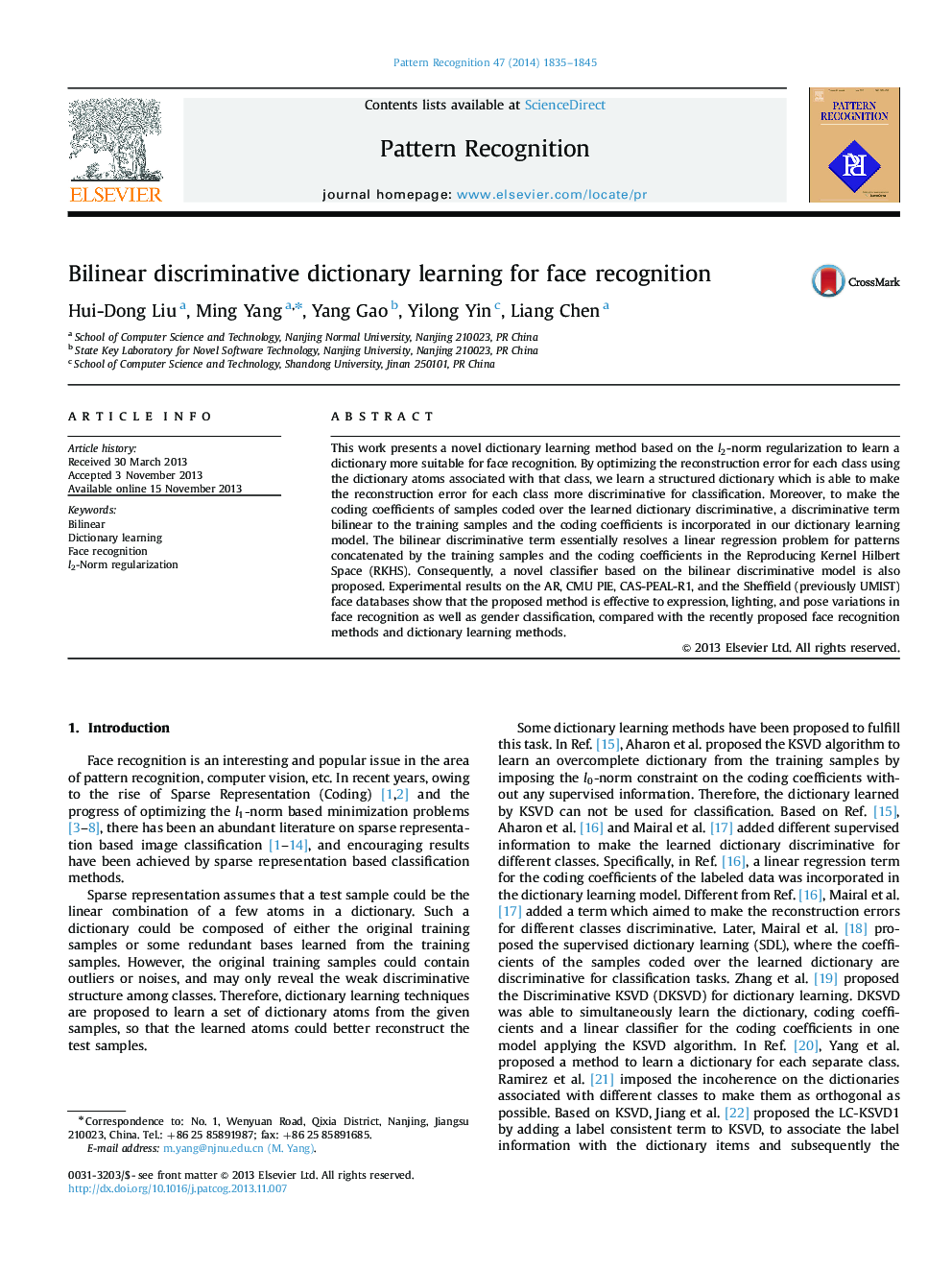| Article ID | Journal | Published Year | Pages | File Type |
|---|---|---|---|---|
| 533266 | Pattern Recognition | 2014 | 11 Pages |
•We propose a dictionary learning method based on the l2l2-norm regularization.•We minimize the reconstruction error for each class to make the dictionary discriminative.•A bilinear discriminative term is incorporated in the dictionary learning model.•A bilinear discriminative classifier is proposed and evaluated.
This work presents a novel dictionary learning method based on the l2l2-norm regularization to learn a dictionary more suitable for face recognition. By optimizing the reconstruction error for each class using the dictionary atoms associated with that class, we learn a structured dictionary which is able to make the reconstruction error for each class more discriminative for classification. Moreover, to make the coding coefficients of samples coded over the learned dictionary discriminative, a discriminative term bilinear to the training samples and the coding coefficients is incorporated in our dictionary learning model. The bilinear discriminative term essentially resolves a linear regression problem for patterns concatenated by the training samples and the coding coefficients in the Reproducing Kernel Hilbert Space (RKHS). Consequently, a novel classifier based on the bilinear discriminative model is also proposed. Experimental results on the AR, CMU PIE, CAS-PEAL-R1, and the Sheffield (previously UMIST) face databases show that the proposed method is effective to expression, lighting, and pose variations in face recognition as well as gender classification, compared with the recently proposed face recognition methods and dictionary learning methods.
